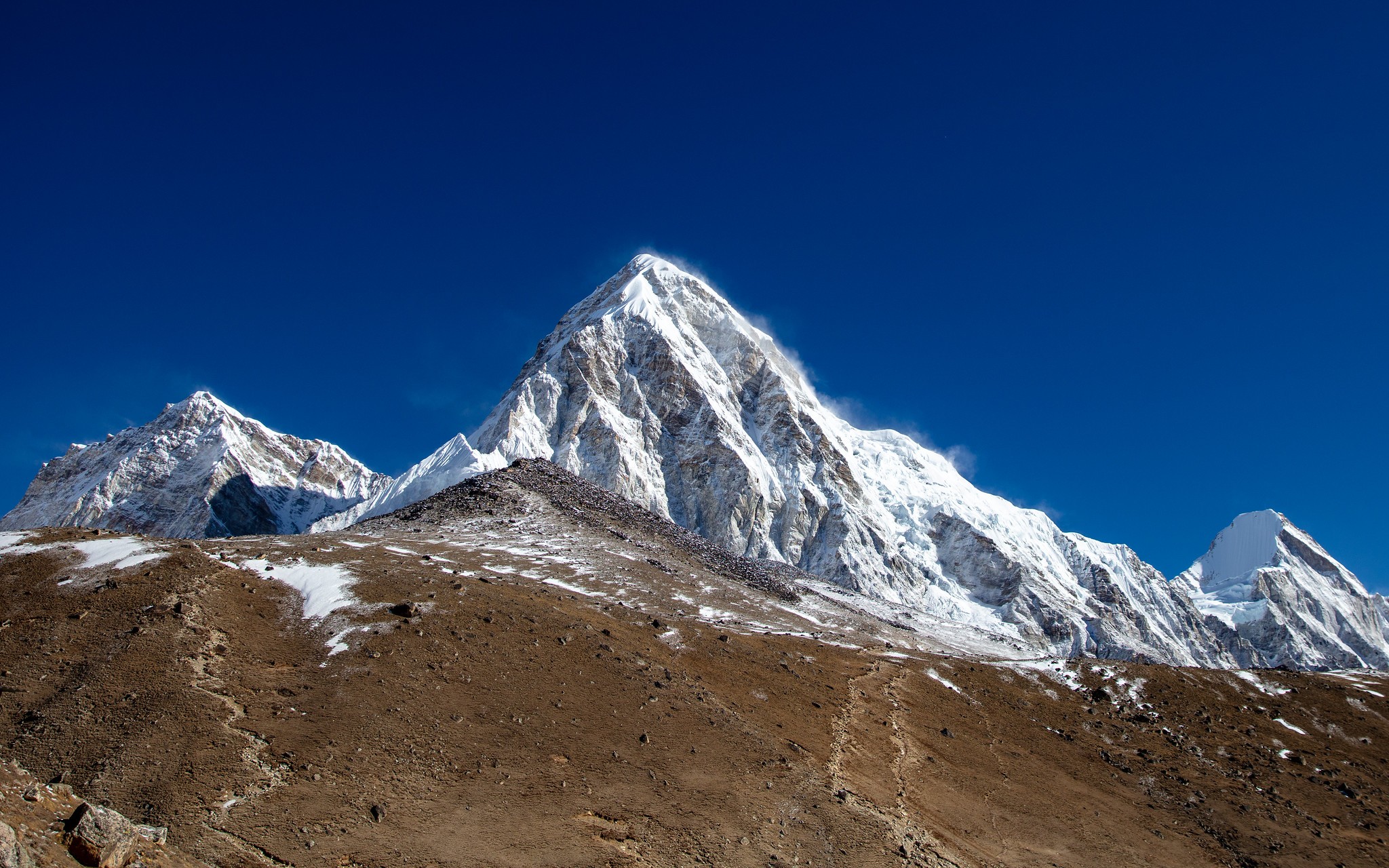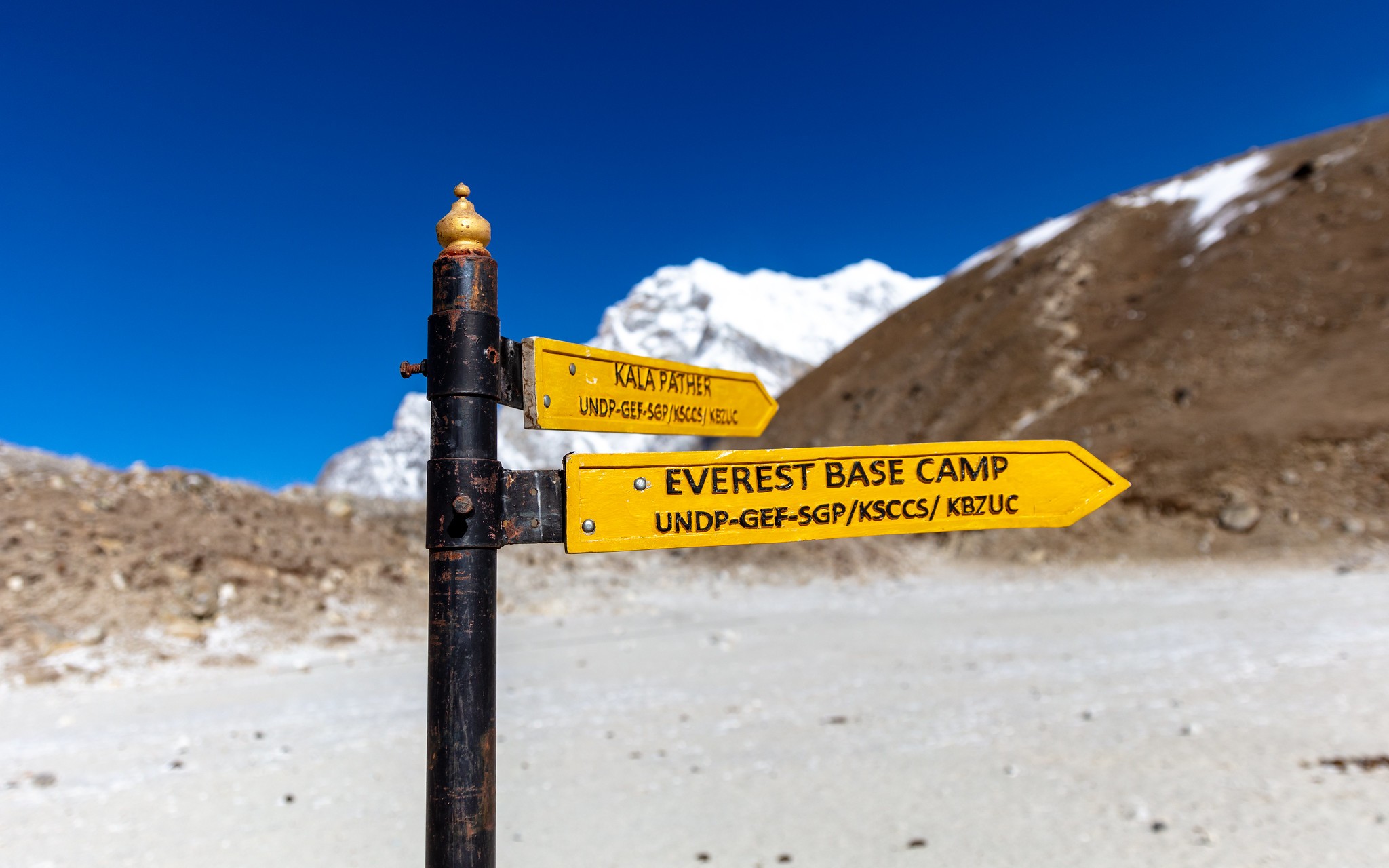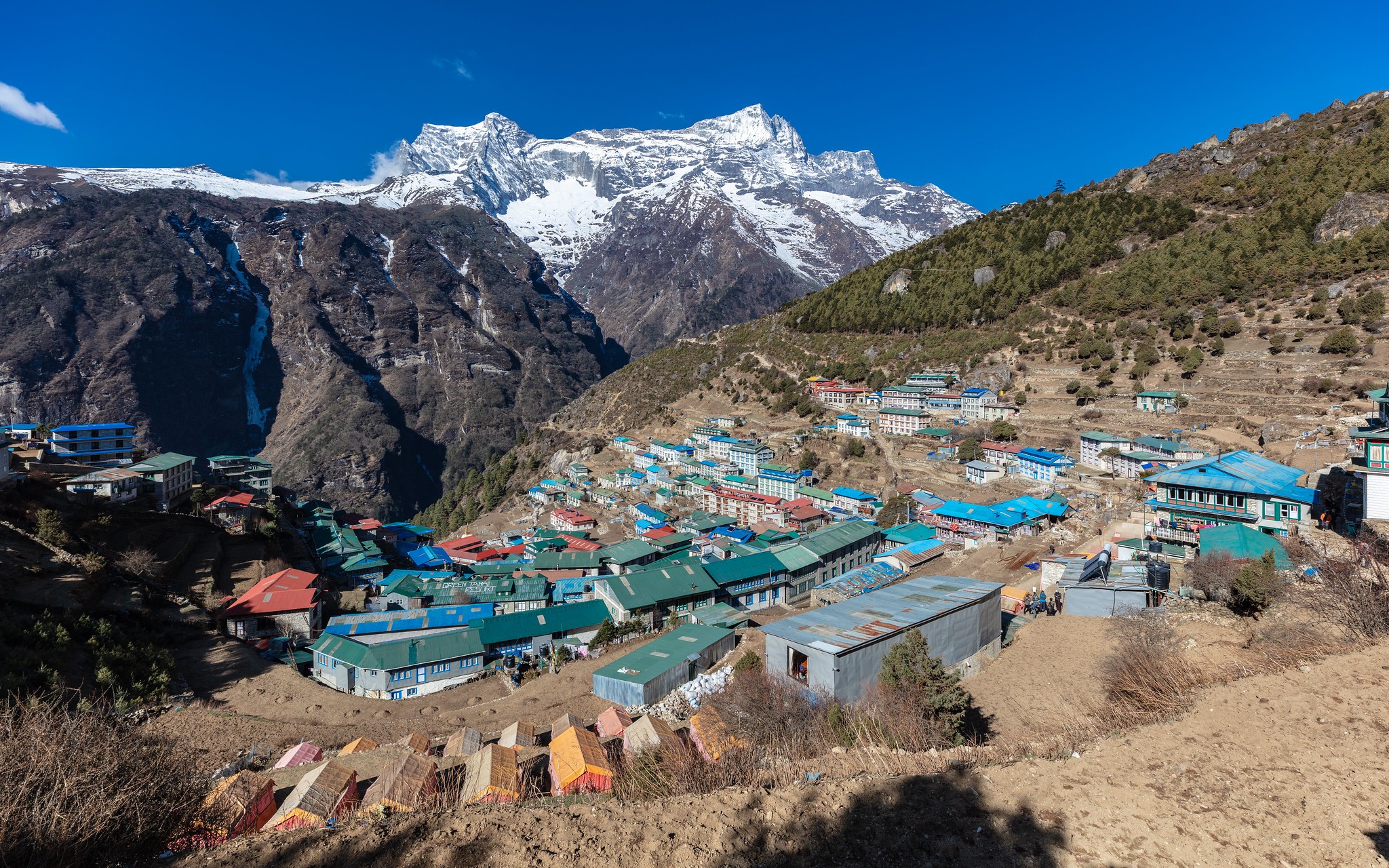
Budget Everest Base Camp Trek
- Tripadvisor 4.96 (from 243+ reviews)
- Competitive Price
- 100% Guaranteed Departures
- Expert Local Guides
Trip Information
Trip Duration
13 Nights 14 Days
Difficulty Level
Moderate
Destination
Nepal
Maximum Height
5545 m
Guiding Method
Trekking
Best Season
Spring & Autumn
Everest region is one of the premium trekking destinations in the world. As home to the highest mountains in the world, the Everest region attracts all types of tourists. However, trekking to the Everest region is expensive but not as expensive as you might think.
The Budget Everest Base Camp Trek is for those who want to do more at less cost. You can also save money to explore Nepal further. This trek can be done on a tight budget and is affordable for everyone.
For anyone dreaming of traveling to Everest, So, Budget Everest Base Camp Trek will make their dream come true at a minimal cost. Budget Everest Base Camp Trek follows a standard route. The only difference is that it is cheap and affordable.
This trip will take you through lush forests of oak, rhododendron, and cherry blossoms to the arid tundra covered in snow, through forests filled with wild and rare animals and birds to green pastures filled with calmly grazing yak, accompanied every second by the ever-nearing views of the Himalayas.
Experience the geography that shapes people into skilled mountaineers, and take in their culture and lifestyle as you share their home and hearth. Take in their unique branch of the Buddhist religion as you visit their ancient monasteries containing treasures, murals, statues, and artifacts from ancient times.
Marvel at the highest glacier in the world, the Khumbu Glacier, as its ice drifts ever slow slightly downwards, and at the Khumbu Icefalls, with its ice drifting along its steep slope. Feel the excitement as you touch down at one of the most dangerous airports in the world, the Tenzing-Hillary Airport. Watch the sun rise and paint the Himalayas golden with its first rays. And lastly, explore the base camp to the highest mountain in the world.
So, get ready for the trip of a lifetime through the land of extremes. At Nepal Ascent, we aim to provide the best services to our clients. We have numerous trips across Nepal and Bhutan. Moreover, we also allow you the option to modify the trip itineraries.
Route Map

Altitude Graph
Itinerary
Your first stop on this trip is in Kathmandu, where you will land after taking a flight from home. Then, you make your way to the hotel. You can spend the rest of the day sightseeing in the city or take a rest. Thamel is an excellent place for a lazy stroll, maybe a bite to eat. If you want to warm up for the trek ahead, you can even plan a short hike into the hills surrounding the city. If you are missing some gears, you can utilize this time to buy them.
Accommodation
2 Star Hotel
Transportation
Private car
Early in the morning, you go back to the airport and hop on a flight to Lukla. For the next 30 minutes, you will be able to see the Himalayas in all their glory as you head in their direction in a small aircraft. The landing will also be pretty memorable as you touch down at one of the world's most dangerous airports.Once you land, you officially begin the trek. As it is mostly downhill, the trek is a light one. You will travel on mostly dirt trails with some paved sections. It is a pleasant hike as you walk shaded by the trees and smell the blooming rhododendrons and cherry blossoms. Watching the Himalayas up high and the gurgling Dudh Koshi river down low, you need to cross a few suspension bridges till you set foot in Phakding.
Accommodation
Teahouse
Meal
Breakfast | Lunch | Dinner
Transportation
Flight / Walking
Today your destination is the famous town of Namche Bazaar. The trail you take is along the course of the Dudh Koshi as you go deeper into the Khumbu valley. It is pretty uphill for most of the trip, with a steep section at the end. As you carry on your journey on trails similar to the day before, you will arrive at the village of Monjo (2,835m/9,301 ft). This village is the official entrance to the Sagarmatha National Park. Once you advance entrance, you will need to walk a few hours and cross a few bridges until you finally arrive at Namche Bazaar.
Accommodation
Teahouse
Meal
Breakfast | Lunch | Dinner
Transportation
Walking
Day four of your trip will be spent in Namche to acclimatize for the journey ahead. The best way to do this is to take an acclimatization hike. Some popular spots to do so include Khumjung village (3,790 m/ 12,434 ft). The village offers an insight into the daily life of the inhabitants of Khumbu and an outstanding view of Khumbila peak (5,717 m/ 18,757 ft). The monastery nearby is also an excellent place to visit. If you are willing and able to hike a little further, your next stop could be Hotel Everest View (3880m). You can get a nice view of the mountains as you relax with some refreshments, with Lhotse (8,516 m/27,940 ft) and Nuptse (7,864m/ 25,801 ft) being some of the peaks you will get a better view of. If you are uninterested in a hike, you can spend the day exploring the various attractions in the town itself. Some noteworthy venues include the Sherpa Museum, which holds exhibits relating to the mountaineering history of the Sherpas, Namche Monastery, and the various eateries lining the stone-paved streets.
Accommodation
Teahouse
Meal
Breakfast | Lunch | Dinner
Transportation
Walking
Day five of your trip is a day of literal ups and downs as you first hike towards the valley walls on narrow trails. Alongside the trail are various stupas, and the trail itself is a dirt path through lush forests with some rocky sections. All the while, you are treated to the sights of the Himalayas, particularly of the Ama Dablam (6,812 m/ 22,349 ft). As you travel higher on the valley walls, the trail eventually becomes plainer and winding. Then, it is time to descend back down the valley again, along similar trails with more rough sections. Finally, you will get to the Imja river and, crossing the suspension bridge over it, enter the village of Phunki Tenga. Now, the time has come again for you to ascend to the valley walls on the trail of stepper incline. Finally, you arrive at Tengboche. You will have ample time to appreciate the beautiful Tengboche Monastery before settling in.
Accommodation
Teahouse
Meal
Breakfast | Lunch | Dinner
Transportation
Walking
Today, your destination is Dingboche village. The first part of the journey is smooth with a gentle ascent. You will cross a suspension bridge over the Imja river once you pass the village of Deboche (3,820 m/ 12,532 ft). The second part of the journey is on a trail with a steep ascent. By this time, you will have noticed losing the view of Mount Everest as you get evermore closer. However, its neighboring peaks more than make up for this loss, as you get clearer views of Ama Dablam (6,812 m/ 22,349 ft), Lhotse (8,516 m/27,940 ft), and Nuptse (7,864 m/ 25,801 ft). Traveling with such views, you finally make it to Dingboche.
Accommodation
Teahouse
Meal
Breakfast | Lunch | Dinner
Transportation
Walking
Today is the second acclimatization day of this trip. The best way to acclimatize is through a short hike, and some of the options you can pick from include Nangkartshang Peak, Nagarjun Hill, and Chhukung Ri. To reach the viewpoint from Nangkartshang Peak (5,083 m/ 16,677 ft), you must travel a steeply inclined winding path that gets rockier as you approach the top. But once there, you will be rewarded with an awesome view of the mountains and surrounding valleys. At the top, you will see an amazing view of Ama Dablam (6,812 m/ 22,349 ft), Lhotse (8,516 m/27,940 ft), and other peaks of the Himalayas to your right, the next leg of the journey on your le ft and your previous route behind you. Nagarjun Hill (5100 m/ 16732 ft), another viewpoint provides an excellent view of Lobuche East (6,119m /20075 ft), Lobuche West (6,145m / 20160 ft), Thamserku (6,623 m/ 21,729 ft) and others. Similarly, the viewpoint at Chhukung Ri (5,550 m/ 18,209 ft) provides another gorgeous view of Makalu (8,485 m/ 27,838 ft) and Tawache (6,495 m/ 21,309 ft) among others.
Accommodation
Teahouse
Meal
Breakfast | Lunch | Dinner
Transportation
Walking
After a day of acclimatization in Dingboche, you leave the village and set your sights on the village of Lobuche (4,940m/ 16,207 ft). You will begin by climbing a ridge till you hit pastures with the occasional grazing yak to get there. From here, traveling on a path carved unto the valley wall, you will set foot in Thukla village (4,620 m/ 15,157 ft). The path becomes rougher and steeply uphill until you arrive at Thukla Pass (4830 m/ 15,846 ft). This place is famous for the memorials and chortens built to remember the people who lost their lives while climbing Mount Everest. Once you travel through the pass, you will reach and begin traveling right alongside the Khumbu glacier till you reach your destination.
Accommodation
Teahouse
Meal
Breakfast | Lunch | Dinner
Transportation
Walking
Today is the day you get to the entire point of this trip - Everest Base Camp. To reach it, you begin by walking along the Khumbu glacier on rough trails formed by the moraine. Most of the trail is gentle, with some steep inclines. As you approach Gorakshep, you will have to cross the glacier on one of its coarse and sandy sections. As you step foot in the village, check into your lodge and make yourself light; for now, you will make the trip to the base camp. The trail will get rougher as you begin trekking next to the glacier, but the incline is gentle. As you travel this rocky road, you can see the Khumbu icefalls and only the very top of Mount Everest, as Lhotse and Nuptse will shroud it. Finally, you reach the base camp. Once you are done exploring the base camp, you head back to Gorakshep on the same trail.
Accommodation
Teahouse
Meal
Breakfast | Lunch | Dinner
Transportation
Walking
On Day 10 of the trip, you need to arise before dawn and hike to Kala Patthar (5,545m/ 18,192 ft) to capture the beautiful look of Mount Everest, and other associated peaks lit up by a rising sun. Once there, you will get a 360 degrees' view of Sagarmatha National Park and essentially your journey up till now, and who can forget the unforgettable peaks of Mt. Everest (8,848.86 m/ 29,031.7 ft), Nuptse (7,864m/ 25,801 ft), Khumbu Tse (6,036m/ 21,771 ft.), Tawache (6,495 m/ 21,309 ft), Ama Dablam (6,812 m/ 22,349 ft), Cholatse (6,440 m / 21,130 ft), and many others. Now, your long journey home begins. You begin by descending the same paths you took the preceding days until you cross Thukla pass. After this landmark, you will cross the river again but then head along an alternative path to Pheriche (4,288m/ 14,070 ft), your stop for the night.
Accommodation
Teahouse
Meal
Breakfast | Lunch | Dinner
Transportation
Walking
Today, the trails will take you up and down the valley walls as you set your destination to Namche Bazaar. You begin by ascending a slight ridge and then descending the hill heading first to Tengboche. From Tengboche, you will descend steeply on the same rocky trails you took days before until you arrive at Phunki Tenga. You will cross the Imja river and then ascend again along the previously traveled routes until you hit Namche Bazaar.
Accommodation
Teahouse
Meal
Breakfast | Lunch | Dinner
Transportation
Walking
The last day of trekking will leave a bittersweet taste as you leave Namche and head to Lukla. Even though you will descend a lot in altitude, there are also some uphill sections to cover, so don't hurry!
Accommodation
Teahouse
Meal
Breakfast | Lunch | Dinner
Transportation
Walking
Today you catch a flight to Kathmandu, leaving the ever bustling trails and the silent peaks of Khumbu behind. On your way back, be sure to catch the last glimpses of the mountains on whose laps you made, hopefully, good memories of the past few days. After landing, you can pursue whatever activity you wish to engage in. You can take a hard-earned rest or a relaxing day at the spa if you feel like it. If you feel energetic, you can visit the many tourist attractions and sites in and around the valley
Accommodation
2 Star Hotel
Meal
Breakfast
Transportation
Flight
Today, you head back home on any flight to your convenience. Be sure to reach the airport about three hours before your scheduled flight.
Meal
Breakfast
Transportation
Private car
Are you dissatisfied with this itinerary?
You can customize your holiday. Let us help you tailor-make your precious Vacation.
What's Included
Meal
- Fresh seasonal fruits after the dinner (while on the trek).
- Breakfast,Lunch and dinner during the trek.
Accomodation
- Lodge expenses during the trek.
- Stay in the city at finest hotel (2 nights twin sharing room at Kathmandu).
- Stay in the city at finest hotel (Can upgrade of the accommodations to luxury hotels / lodge is possible at extra cost).
Staffs & Crew
- A porter and his entire expenses.
- Insurance of guide and porter.
- Licensed, experienced and English speaking trekking guide.
Transportation
- Airport pickup and drop facility.
- Kathmandu-Lukla-Kathmandu flight tickets
- Transportation in private vehicle.
Permits & Paperworks
- All necessary paperwork and trekking permits (National Park Permit, TIMS)
Other
- Down jackets and sleeping bags (provided upon request).
- First aid medical kit
- Nepal Ascent Treks duffel bag, t-shirt, and trekking map.
What's Not Included
- All meals in Kathmandu
- Cost for additional trips.
- Extra night accommodation in Kathmandu in case of early arrival, late departure, and early return from the mountain(due to any reason) than the scheduled itinerary
- Extra porter charge.
- International airfare to and from Kathmandu
- Nepal arrival visa.
- Personal expenses (phone calls, laundry, bar bills, battery recharge, extra porters, bottle or boiled water, shower, etc.)
- Tipping to staffs (as an appreciation).
- Travel insurance which covers emergency rescue and evacuation.
GROUP TOURS
| Trip Date | Status | Price | Book Now |
|---|---|---|---|
Jan 2026 | |||
Feb 2026 | |||
Mar 2026 | |||
Apr 2026 | |||
May 2026 | |||
Jun 2026 | |||
Jul 2026 | |||
Aug 2026 | |||
Sep 2026 | |||
Oct 2026 | |||
Nov 2026 | |||
Dec 2026 | |||
Jan 2027 | |||
Feb 2027 | |||
Mar 2027 | |||
Apr 2027 | |||
May 2027 | |||
Jun 2027 | |||
Jul 2027 | |||
Aug 2027 | |||
Sep 2027 | |||
Oct 2027 | |||
Nov 2027 | |||
Dec 2027 | |||
Jan 2028 | |||
Feb 2028 | |||
Mar 2028 | |||
Apr 2028 | |||
May 2028 | |||
Jun 2028 | |||
Jul 2028 | |||
Aug 2028 | |||
Sep 2028 | |||
Oct 2028 | |||
Nov 2028 | |||
Dec 2028 |
Essential Info
Physical Fitness
Many people have questions as to what level of physical fitness is required for visiting Nepal, and that is extremely reliant on what activity the visitor is engaging in. With that said, for a standard trek of moderate grading (Everest Base Camp Trek is an example of moderate) the daily activity will be 7-8 hours, and elevation will generally not exceed 5,500 meters. The day’s trekking is sustained and will involve both long steep climbs, and descents with a variety of terrain underfoot from well-trodden paths, to rocks covered with ice or snow. A typical day would include a number of climbs or descents of 500 meters or more, starting after breakfast, resting at lunch, then continuous trekking until arriving at the teahouse.
In preparation for the trek, it is important to begin a training requirement at least 4 months before departing for Nepal. Three to four hours of aerobic exercise like running, walking, swimming, cycling & some gym work per week is the minimum and most will find it beneficial to add some basic strength training to their physical fitness routine. One of the best ways to prepare is to take practice hikes with a daypack roughly the same weight as what you will be taking on the trek. Do this only after a baseline of fitness has been reached. Moving fast is not the end goal, rather endurance is the focus, and will provide a more enjoyable and safe adventure.
Trekking Seasons in Nepal
There are two main seasons in which Nepal sees the most amount of visitors. Fall (September through November) being the most popular, and spring (March to May) coming in close behind. The summer months of June, July and August are the monsoon season and as such the trails are mostly washed out, and roads can sometimes be impassible due to landslide activates. Not to mention the view is non-existent. Still, there are a few places that lie in rain shadow areas and see significantly less rain if any at all, and summer can be a good time to visit these places.
Winter in Nepal is dry, with very cold nights where temperatures can drop to -20°C at the highest altitudes, but the days are pleasant and sunny. Additionally, the trails are much less crowded during this time of year. In Kathmandu, maximum daytime temperatures reach around 20°C.
Fall is the most popular because it’s after the monsoons, and the air is dry, the days are sunny, and everything is green in the lower valleys from the excessive rains. Spring is a popular choice because some rain returns, but the weather is generally warm and dry, and flowers are in bloom in the lower elevations.
Trekking Day
A typical trekking day begins with a cup of tea at around 6 in the morning. It is advised to pack your trekking gears in a duffle bag and essential supplies in your day pack in these early hours. After having breakfast, we begin the trek and head along the trail at around 8 am. The morning walk is designed to be longer as we begin with refreshed bodies and enthusiasm. Following a good morning’s walk, we make stop for lunch at around 11.30 am. The lunch involves group meals enjoying the vicinity around the stop. You can explore the surrounding or use the time according to your own consent. After resting for about an hour or two, we resume our trek to reach teahouse or camp by 3-4 pm. The afternoon walk is relatively shorter and can involve games and side trips as organized by the trekking guides. You also can enjoy breaks during the trek to relax, read or stroll around the area. You can converse with the local people and observe their lifestyle. Dinner is served around 7 in the evening to round off the day.
Meals and Accommodations
During the length of the trek, the accommodation style is commonly referred to as teahouse. These are family-run basic lodges that fill the role of the restaurant, meeting place, and boarding house for tourists. Electricity can be found in the rooms, which means one light bulb, and one or two outlets for charging electronics. The common areas are also lit by electricity. Teahouses may use solar, hydroelectric, or have electrical lines running into the village, so the commonality and availability of electricity may vary.
Most teahouses have private rooms, though if the trek is in a more remote or high altitude place dormitories are the norm. Each room has 1 or 2 single beds with basic bedding, and the bathroom is shared. Expect a mix of western and squat style toilets in the bathrooms.
Breakfast and dinner are taken at the teahouse and these lodges have large family style dining rooms centered on a stove to provide heat. The menu will have Nepali style western foods such as pasta, pizza, pancakes, burgers, and fries. Also on the menu is the traditional Dal Bhat meal. This is a lentil soup with rice and vegetable or meat curry. Most menus will also offer a smattering of local cuisine.
Internal Flight Delays
Nepal is an incredible country of mountains and valleys, rivers and green rolling hills. With this incredible diversity of landscapes, road travel can be extremely time consuming and flights within Nepal to reach popular trekking destinations is a must. Along with this mountainous terrain also comes the possibility of in climate weather. Not to mention the incredibly high number of visitors during peak seasons makes internal flight delays a very real possibility. To manage this possibility, it may be helpful to have a few extras days on either end of your tour. If any cancellations or flight delays do occur (high chances of flight delays from around Kathmandu to Lukla, Everest region), we also provide services to arrange helicopter to help you to be on your schedule on the premises of Civil Aviation Rules in Nepal which state that helicopters can fly if the visibility is 1500m. The cost ranges from USD350 to USD650 according to the number of passengers. The payment can be made either to the helicopter company or to us directly and can be made either by cash or using a credit card. It will also be helpful to purchase and review your insurance as some of the alternative measures for travel may be covered. Flight insurance too may cover changing your international flight if necessary.
Travel Insurance
Many expeditions and tours require that travel insurance is purchased prior to arriving in Nepal, but other treks and tours may not. However, travel insurance is definitely an important consideration. There are a number of reasons to consider insurance. Firstly, it may be required, so check to see what is being asked for by the company. Second, Nepal is a landlocked country, and there are few direct flights. Travel in and out can encounter some disruptions and if purchasing insurance, make sure flight delays and cancellations are included. The next reason to choose insurance is that, though every safeguard is in place during your tour, there are always extenuating circumstances that may result in an accident. Read the fine print of insurance policies to ensure trekking or any other activity you are engaging in is covered, as some policies have stopped covering trekking in certain places. It is impossible to have a relaxing trip without the comfort of good insurance, so do the research and choose carefully.
Nepal Visa Entry Procedure
For entry into Nepal, there are visa requirements everyone (except Indian nationals) must complete before being allowed to pass through immigration. This is for air travel as well as overland transportation. Most visitors may obtain a visa to enter Nepal, however, there are exceptions. There are a number of entry points where you can obtain the visa upon arriving by land, but Tribhuvan International Airport is the only one for air transport.
Visa on Arrival Tourist Visa
Three options are available for entry
15-day single entry: US $30
30-day single entry: US $50
90-day multiple entries: US $125
Please have a passport valid for at least 6 months from the time of entry, and have cash ready, preferably in US dollars, though there are other currencies Nepal Immigration accepts. If you are entering via overland, you must have US cash and 3 passport photos. For arrival by air, the kiosks at the airport take your picture for you.
For the most up to date list of exceptions for visa on arrival or to obtain the most current visa information, visit the Nepal Department of Immigration website.
Acute Mountain Sickness (AMS)
Acute Mountain Sickness is usually seen in un-acclimatized people shortly after ascent to high altitudes. The condition occurs due to the thinning of air as the altitude increases. The condition, if not taken seriously and treated immediately, can be life-threatening and its symptoms can be seen generally above 3000 meters. Some of the symptoms of AMS are nausea, vomiting, tiredness, shortness of breath and cerebral pain. The treks are designed to properly acclimatize you to the change in high altitude climate and sufficient precautionary measures too are taken to take utmost caution. We also equip our staffs with cell phones and satellite phones in occurrence of any emergency cases. We are greatly driven to keep the safety and security of our clients as our foremost concern.
Drinking Water
Water is essential for life, and clean water is imperative while on holiday. When choosing to visit less developed countries it is a concern that all travelers should consider. A few options are available when trekking or traveling in Nepal that will mitigate any chances of drinking contaminated water which could cause disruption of an otherwise fun adventure. The first consideration to take into account is that tap water should not be ingested. That even means when brushing your teeth. Most will choose to buy bottled water and if doing so make sure the cap has not been opened previously. Plastic bottle refuse is a problem, and with that being said there are other options on the market to assist in making water drinkable. Your local outdoor store can help with choosing what option might be best to use in conjunction with a reusable bottle. Your guide can also steer you to water that has been filtered and purified so ask him or her what is available.
Arrival Instruction
Upon your arrival at Tribhuvan International Airport, our company representatives are stationed to welcome you to the country. We request you to carefully look for your name being held by our representatives following the events upon landing. The representatives are responsible to escort you to your hotel in Kathmandu. You will see men offering you to carry luggage and take you to your destination as you exit the airport. We request you to pay no attention to these people and follow the designated representatives and follow their instructions. You will also need to keep an eye on your luggage and belongings to avoid any complications.
Everest Base Camp Trek June 2022
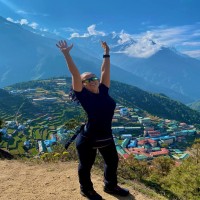
Lucia Chapa Espanoza
MXA journey of a lifetime, in good hands
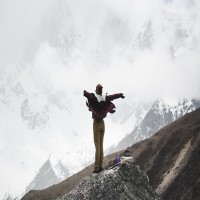
Nayelli Carrera
CRPrice per person
US$ 1,280
US$ 1,568



